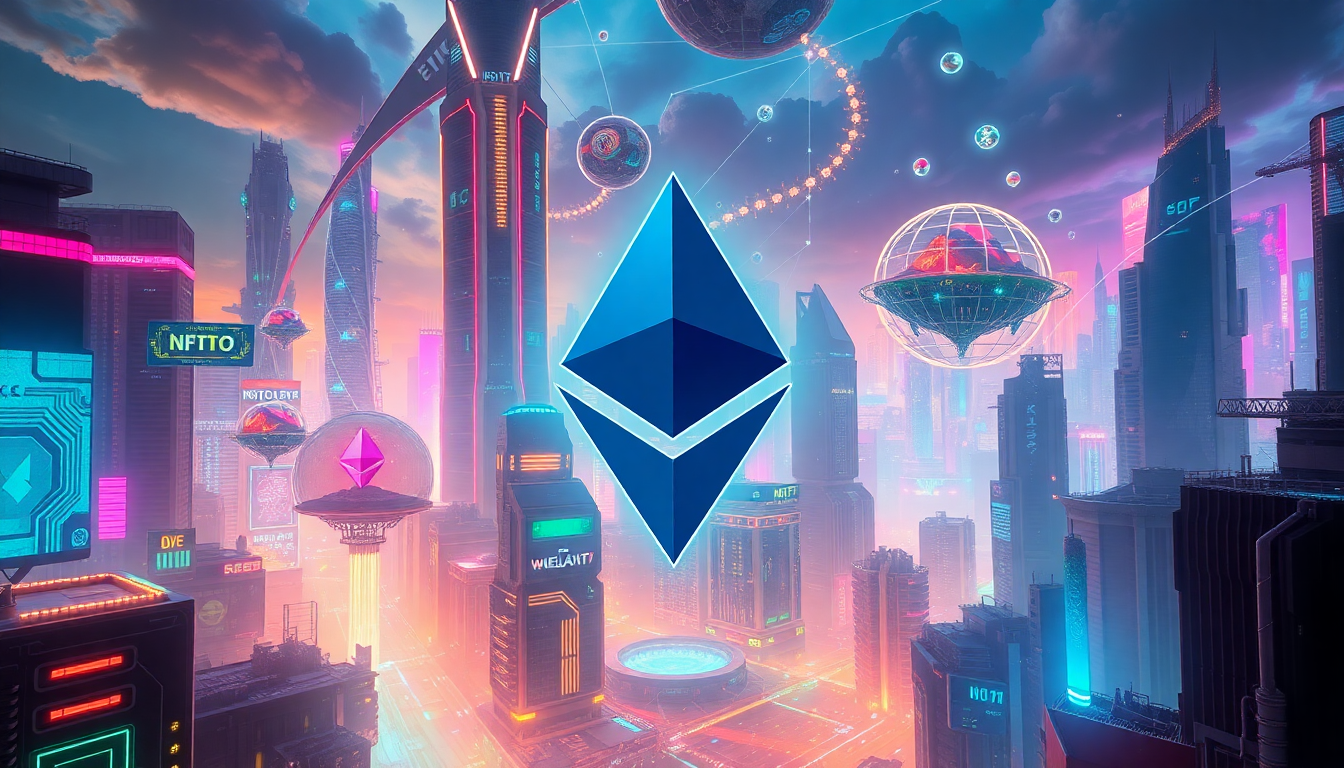Overcoming Barriers to Mainstream NFT Adoption on Ethereum: Paving the Way for Global Scaling
The explosive growth of Non-Fungible Tokens (NFTs) has positioned Ethereum as the dominant blockchain for digital asset ownership. However, as the ecosystem expands, significant challenges emerge that hinder widespread adoption. This article explores the barriers facing Ethereum's NFT landscape and potential solutions to scale NFTs globally while maintaining the network's core principles of security and decentralization.
Introduction: The NFT Revolution and Ethereum's Central Role
NFTs have revolutionized digital ownership, enabling creators and collectors to trade unique digital assets with unprecedented ease. Ethereum, as the pioneer of smart contract technology, has become the primary platform for NFT creation and trading. However, the rapid growth of the NFT market has exposed limitations in Ethereum's infrastructure that must be addressed to facilitate mainstream adoption.
Ethereum's NFT Ecosystem: Challenges and Limitations
Low Scalability: The Throughput Bottleneck
Ethereum's commitment to security and decentralization comes at the cost of scalability. With a transaction throughput of only 5-15 transactions per second (TPS), the network often experiences congestion during peak periods. This limitation leads to:
- Prolonged transaction times, sometimes stretching to hours
- Skyrocketing gas fees, making transactions economically unfeasible for many users
- Pricing out of developers and traders from the ecosystem
Even with the anticipated Ethereum 2.0 upgrade, transaction throughput will remain a significant hurdle for microtransactions in NFT-based gaming and other high-volume applications.
Poor User Experience: Friction in the NFT Journey
The current user experience for NFT trading on Ethereum is far from optimal for mainstream adoption. Key issues include:
- Long confirmation times for transactions
- High failure rates and front-running of trades
- Confusing wallet interfaces lacking robust recovery options
- Insufficient information for informed purchasing decisions
While some solutions or alternative blockchains aim to enhance user experience, they often compromise on asset security or network decentralization, creating a difficult trade-off for users and developers.
Slow Developer Experience: Barriers to Innovation
Developers face significant challenges when creating NFT applications or marketplaces on Ethereum:
- Substantial time spent on blockchain setup rather than user experience design
- Steep learning curve for new programming languages and paradigms
- Lack of simple APIs, platform-specific SDKs, and pre-built infrastructure
These barriers stifle innovation and prevent potentially groundbreaking NFT experiences from coming to fruition.
Illiquidity: The Unique Asset Dilemma
NFTs, by their very nature, are less liquid than fungible tokens due to their uniqueness. This characteristic leads to several challenges:
- Difficulty in valuing NFTs on a case-by-case basis
- Complexity in creating buy orders for collections with numerous unique items
- Increased costs for minting and trading NFTs
- Liquidity fragmentation across marketplaces, complicating price discovery
Solutions and Innovations: Paving the Way for Mainstream Adoption
Layer 2 Scaling Solutions: Boosting Throughput and Reducing Costs
Layer 2 scaling solutions, such as rollups and sidechains, offer promising avenues for improving Ethereum's scalability:
- Increased transaction throughput without compromising security
- Significantly reduced gas fees for users
- Faster confirmation times for a smoother user experience
Example: Immutable X, a Layer 2 solution specifically designed for NFTs, offers instant trading, zero gas fees for minting and trading, and massive scalability while maintaining Ethereum's security guarantees.
Improved User Interfaces and Education
Enhancing the user experience is crucial for mainstream NFT adoption:
- Simplified wallet interfaces with clear recovery options
- Educational resources to help users understand NFT valuation and risks
- Streamlined marketplace designs for easier navigation and discovery
Case Study: OpenSea, the largest NFT marketplace, continually improves its user interface and provides educational content to make NFT trading more accessible to newcomers.
Developer Tools and SDKs: Accelerating Innovation
Providing robust tools and resources for developers can significantly boost innovation in the NFT space:
- Pre-built infrastructure and SDKs for common NFT functionalities
- Simplified APIs for interacting with the Ethereum blockchain
- Developer-friendly documentation and support channels
Example: The Alchemy NFT API offers developers a suite of tools to build and scale NFT applications more efficiently, reducing the time and complexity involved in blockchain integration.
Liquidity Solutions: Enhancing NFT Marketability
Innovative approaches to improve NFT liquidity are emerging:
- Fractional ownership of high-value NFTs
- NFT-backed lending and borrowing platforms
- Automated market makers (AMMs) for NFT trading
Case Study: NFTX allows users to create ERC-20 tokens backed by NFTs, enabling fractional ownership and improving liquidity for popular NFT collections.
Conclusion: A Bright Future for Ethereum NFTs
While Ethereum's NFT ecosystem faces significant challenges, the ongoing development of scaling solutions, improved user experiences, and innovative liquidity mechanisms paint a promising picture for the future. As these barriers are overcome, we can expect to see unprecedented growth in NFT adoption, unlocking new possibilities for digital ownership and creative expression on a global scale.
The journey towards mainstream NFT adoption on Ethereum is complex, but the potential rewards are immense. By addressing scalability, user experience, developer tools, and liquidity challenges, Ethereum can maintain its position as the leading platform for NFTs while opening doors to a new era of digital asset ownership and creativity.
